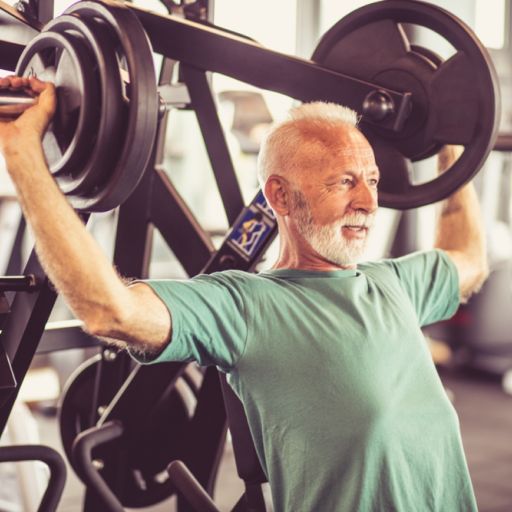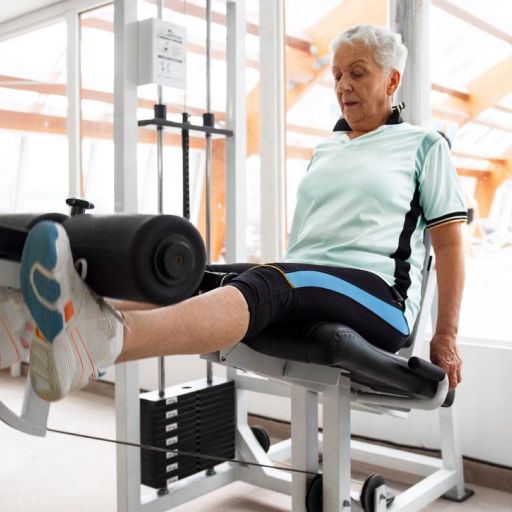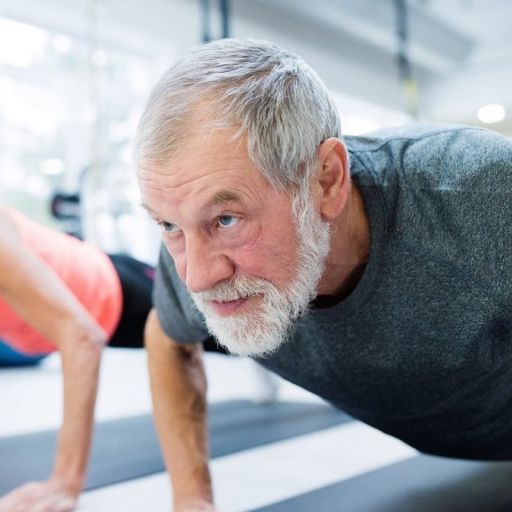What do you Know About Credit Scores!
Unveiling the Truth: Debunking Home Insurance Myths.
What to do When Your Auto Insurance Claim is Denied?
Weighing the Pros and Cons: Using a Personal Loan to Tackle Credit Card Debt.
Insuring Your Peace of Mind: An Overview of Common Types of Insurance.
What You Need to Know About Secured Credit Card Deposits!




As we age, we lose muscle mass and strength, a phenomenon known as Sarcopenia. Sarcopenia not only affects the quality of life of older adults, but also increases the risk of falls, fractures and other health problems.
However, through proper strength training, older adults can effectively slow down muscle loss and improve their quality of life. In this article, we will introduce in detail the importance of strength training for older adults abroad, the scientific basis, suitable training methods, and related precautions.
Why do older people need strength training?
Delay muscle loss
Impact of sarcopenia: As we age, muscle mass decreases by approximately 1% to 2% per year, especially after the age of 60. This can lead to a significant decline in muscle strength and function.
Health Risks: Muscle loss is associated with a variety of health problems, including osteoporosis, arthritis, cardiovascular disease and metabolic syndrome.
Independence in life: Maintaining muscle strength helps older adults to maintain independence in daily living, such as climbing stairs and lifting objects.
Improve Bone Density
Prevent osteoporosis: Strength training can stimulate bone growth and increase bone density, thus reducing the risk of fractures.
Enhance joint stability: Strong muscles can better support the joints and reduce the incidence of diseases such as arthritis.
Improves mental health
Boosts self-confidence: regular strength training can improve self-esteem and self-confidence in older adults.
Reduces symptoms of depression: Exercise promotes the secretion of endorphins, a natural “happy hormone” that helps relieve stress and depression.
Boosts metabolism
Increase basal metabolic rate: Muscle tissue burns more energy than fat tissue. Therefore, increasing muscle mass can increase basal metabolic rate and help control weight.
Improve insulin sensitivity: Strength training helps to improve the body's sensitivity to insulin and reduce the risk of diabetes.
Scientific Rationale

Physiological Mechanisms
Muscle Protein Synthesis: Strength training stimulates muscle protein synthesis, which promotes muscle growth and repair.
Neuromuscular adaptation: Through repeated strength training, the nervous system can activate muscle fibers more effectively, improving muscle strength and coordination.
Research Evidence
Several studies have shown that regular strength training can significantly increase muscle mass and strength in older adults. For example, a study published in the American Journal of Geriatrics found that after 12 weeks of strength training, older adults improved their muscle strength by an average of 25%.
Long-term effects*: Long-term adherence to strength training can continue to slow the rate of muscle loss and even reverse some of it.
Strength Training Methods for Older Adults
Free Weight Training
Dumbbells and barbells: Use dumbbells and barbells for a variety of movements such as deadlifts, curves and push-ups.
Advantages: High flexibility and the ability to adjust weights and movements according to individual circumstances.
Cautions: Beginners should be guided by professionals to avoid injuries.
Equipment training
Gym equipment: use a variety of equipment in the gym for training, such as leg push-up machine, chest push-up machine and so on.
Advantages: Equipment design is usually more stable and suitable for beginners and people with specific needs.
Cautions: Ensure that you use the equipment correctly and follow safe operating procedures.
Self-weight training
Push-ups, squats and pull-ups: training with your own body weight without additional equipment.
Advantages: Convenient and easy to do, can be done at home or outdoors.
Cautions: Choose the appropriate difficulty level according to personal ability and avoid over-exertion.

Elastic band training
Resistance Bands: Use resistance bands of different strengths to perform a variety of stretching and pushing movements.
Advantages: Portable and easy to adjust resistance, suitable for all ages and fitness levels.
Cautions: Choose a resistance band that suits your ability to avoid straining.
Balance Training
Standing on one leg, Tai Chi: improves body stability and coordination through balance exercises.
Advantages: Helps prevent falls and improves safety in daily life.
Cautions: Perform in a safe environment, preferably accompanied by someone.

Training Programs and Suggestions
Develop a personalized plan
Assess physical fitness: Conduct a comprehensive physical fitness assessment to understand your physical condition before you start training.
Set goals: Define your training goals, such as increasing muscle mass, improving strength or improving balance.
Consult a professional: Seek advice from a professional fitness trainer or doctor to develop a training program that suits you.
Gradual increase in difficulty
Progressive: Start with low-intensity, simple movements and gradually increase the weight and complexity.
Avoid over-training: Perform strength training 2-3 times a week for 30-45 minutes each time to give your body enough recovery time.

Combine with other forms of exercise
Aerobic exercise: Combine walking, swimming, cycling and other aerobic exercises to improve cardiorespiratory function in general.
Flexibility training: Perform yoga or stretching exercises to improve the body's flexibility and joint range of motion.
Nutritional Supplementation
Protein intake: Ensure adequate daily protein intake to support muscle growth and repair.
Balanced diet: Eat plenty of fresh vegetables, fruits and whole grains to maintain a balanced nutritional intake.
Hydration: Maintain adequate water intake, especially before and after training.
Precautions
Warm-up and Stretching
Adequate warm-up: Warm up for 5-10 minutes before each training session, such as easy walking or jumping rope, to increase body temperature and blood circulation.
Stretching and Relaxation: Appropriate stretching after training to help muscle recovery and reduce soreness.
Correct Posture
Learn proper technique: Make sure every movement is done properly to avoid injuries due to incorrect posture.
Mirror assistance: Use a mirror to check your posture and make sure your movements are standardized.

Listen to body signals
Avoid overexertion: If you feel extreme fatigue or pain, stop training immediately and rest.
Pay attention to your breathing: Keep breathing naturally during training and do not hold your breath.
Medical Supervision
Regular medical check-ups: Have regular medical check-ups to ensure that you are physically fit for strength training.
Follow your doctor's advice: If you have a chronic disease or other health problem, make sure you train under your doctor's supervision.
Social Interaction
Join a group class: Join a senior fitness group or attend a group class to make new friends and increase the enjoyment of your workout.
Family support: Invite family members to participate in training together to encourage and support each other.
Strength training is an important fitness activity for the elderly, which can not only delay muscle loss but also bring multiple health benefits. Through scientific methods and reasonable training programs, older adults can safely and effectively perform strength training and enjoy a healthy, active lifestyle.
We hope that the information and advice provided in this article will help more older adults begin their strength training journey and embrace a better later life.

A complete guide to outdoor hiking in the cool autumn weather for the elderly

Scaling New Heights: The Unstoppable Senior Rock Climbers of America!

Greenery under the sunset - Gardening is a happy time for the elderly

The appeal of the outdoors for seniors in the fall and winter in the USA!